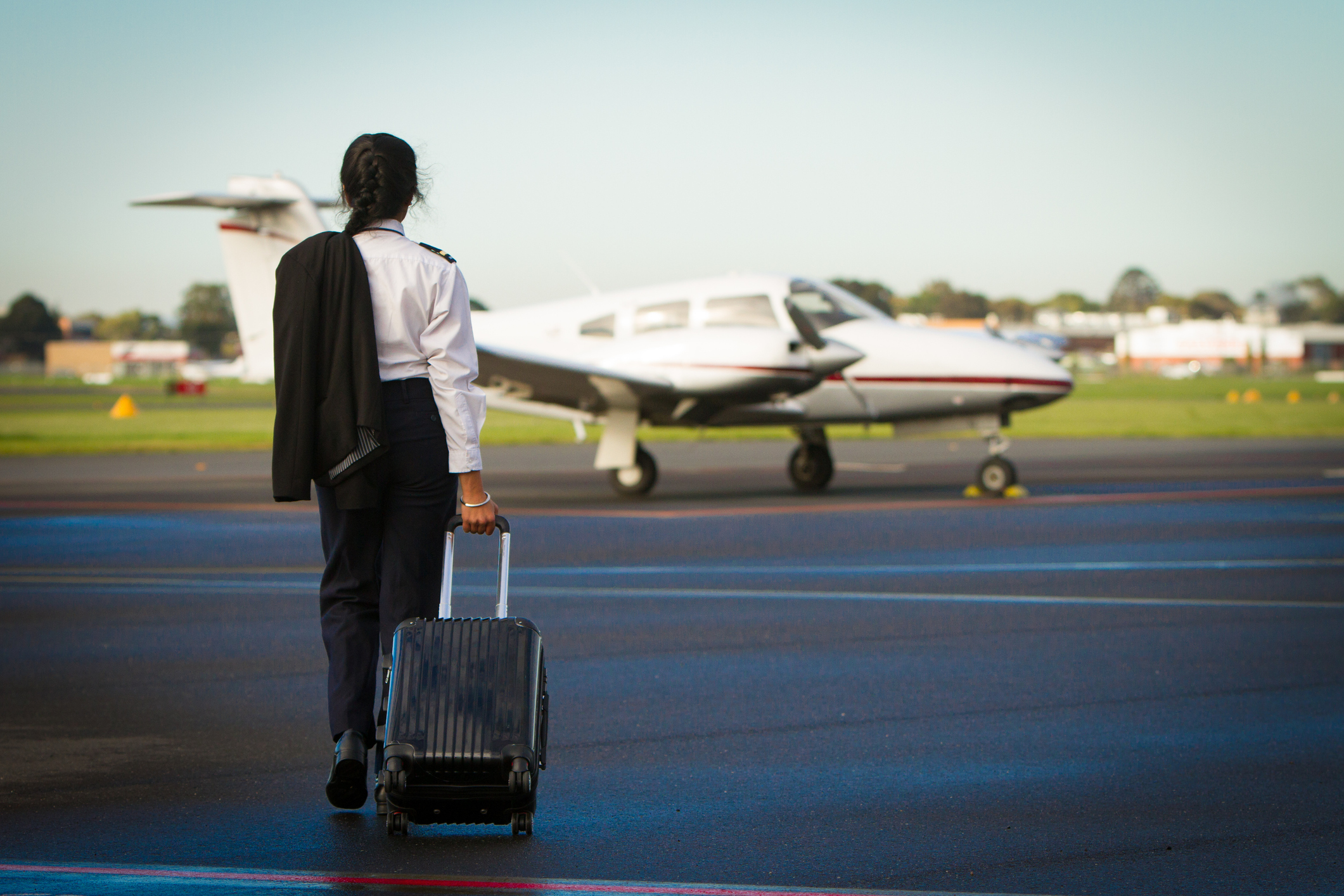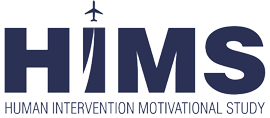IDENTIFICATION
Although chemical dependency is a common illness in any large workforce, identification in an airline setting is often difficult.
There are many unique factors that make identification of chemical dependency in the pilot population a difficult task. Even with a good understanding of these factors and the aviation profession, individuals suffering from this disease often go undetected for a significant period. Since these same individuals represent a potential threat to aviation safety and to their own wellbeing, it is essential they be identified and afforded treatment for their condition.
For some chemically dependent pilots, the identification process will not be protracted or difficult. Cases that involve exceedingly high blood alcohol levels, the manifestation of withdrawal symptoms, multiple cases of hazardous use such as multiple DUI convictions, the use of illicit substances, a positive DOT random test or impairment on duty will quickly result in a diagnosis of chemical abuse or dependency. However, these are examples of behavior seen in the “later stages” of the disease. For pilots experiencing early symptoms of chemical dependency, a diagnosis will not be so obvious.
In this section, we will try to describe program characteristics that enhance the identification process. Such characteristics include a strong continuing education component, cooperation between management and employees when dealing with situations which may involve addictive illness, thorough assessment protocols, clear understanding of assessment and representative functions within the pilot union, and support for a patient and confidential approach to disease identification. We hope a discussion of each of these characteristics will provide you with some ideas about how identification of potentially chemically dependent employees may be enhanced on your property.
Airline Culture
Although chemical dependency is a common illness in any large workforce, identification in an airline setting is often difficult. A majority of the people in the industry use alcohol appropriately, as do those in society as a whole. However, when misuse occurs, the unique historical culture of aviation and the unusual work environment make misuse difficult to identify.
The early days of aviation involved “death-defying” operations on a seemingly daily basis. The men and women who pioneered aviation were thought of as courageous people who put their lives on the line every time they took to the air. It was not surprising that a little “fast living” was considered acceptable for those who operated so continuously “on the edge.” And, since many early flights took place in the context of war, the dangers were quite real, and alcohol misuse was tolerated. Over time, a culture of “fly hard and play hard” developed, and was even encouraged and romanticized. In today’s world, the attitudes and ideas related to this special aviation culture still linger.


Of course, today’s aviation is much different than aviation in those early days. It is the safest form of transportation. The FAA and airline companies provide strict rules and regulations related to the consumption and/or presence of alcohol or drugs in the industry workforce. Compliance with these restrictions is enforced through mandatory testing that can impose severe penalties for violations. But, there are still some unique factors that discourage the identification of those who misuse alcohol or who develop chemical dependency.
Unfortunately, an undiagnosed illness doesn’t lessen its presence and, occasionally, there is a highly publicized incident about a pilot reporting for duty impaired. We hope increasing awareness of some warning signs of chemical dependence might be helpful in preventing such instances. We’ll discuss some of the signs and symptoms below and, though the examples often refer to drinking, similar behaviors are present in other forms of chemical dependency.
Signs and Symptoms
“Now you see them, now you don’t.” As chemical dependency progresses, signs of the disease become increasingly noticeable. However, these signs often appear for only limited periods of time, or become noticeable in what are apparently unrelated contexts. Some of these signs are not unique to chemical dependency, which makes their root cause difficult to determine. Additionally, signs and symptoms may disappear entirely if the individual attempts to control their consumption through periods of abstinence, or chooses to binge drink alone or in geographically remote locations.
Appearance of Symptoms
It is useful to look at the signs and symptoms of this disease from the differing perspectives of family, peers, and supervisors.
Family
Usually, the family is the first to notice the problem behaviors. Family members may notice an increase in the amount consumed, or a change in the affected person’s drinking pattern. The drinker may become more secretive about their drinking, drink at odd hours, or begin to drink prior to events where limited social drinking is expected to occur. The drinker may suddenly change friends, lose interest in family activities, or become moody and irritable. In some cases the drinker will begin to become verbally or physically violent.
As the drinker develops tolerance to alcohol, s/he may consume significant amounts while showing no visible signs of impairment. Impairment is present, however, and so there is often an increase in accidents or mistakes in judgment. Sometimes this deterioration of ability leads to financial or legal trouble. The drinker may begin to isolate from other family members. As the drinking problem becomes more apparent, family members will probably try to insulate the drinker from outsiders and co-workers because of shame and fear associated with the condition. While this reaction is understandable, it often enables the drinker to avoid the natural consequences of their behavior and delays effective treatment of the illness.
This enabling behavior often referred to as co-dependency, is a desperate attempt to accommodate the unpredictability of the chemically dependent person’s behavior. Co-dependency is a dysfunctional state that often must be treated simultaneously with treatment for the chemically dependent person in order to restore health to the family unit.
Peer
In the unique working environment of the professional pilot, the pilot often works closely for several days with a small group of people who were, prior to that trip, complete strangers. This circumstance is repeated on a regular basis for months and years at a time. Working regularly with people who have no knowledge or experience of past behavior tends to limit a co-workers ability to identify a chemical dependency problem. Even if misuse is identified, the usual predilection is to treat the misuse as an isolated incident not worthy of reporting.
Nonetheless, signs of chemical dependency are often present if one is attuned to them. Signs of a possible problem include tardiness, being unprepared for a flight sequence, erratic performance, irritability, mood swings, heavy use of cologne or breath mints, isolation from the rest of the crew during layovers, or observed heavy consumption with no apparent effect, i.e. tolerance to alcohol. Tolerance is a key sign of regular, ongoing heavy consumption and is, therefore, a significant warning sign. It can be perplexing, however, in that it makes an assessment of impairment harder to determine. The person may appear nearly normal, even with alcohol in their system. This problem is compounded if a recent shower or use of other products such as mouthwash, toothpaste, or eye drops masks other signs and symptoms.
Supervisors
For management representatives, often in the Chief Pilot’s Office, the signs and symptoms of a possible chemical dependency problem are usually more distant and non-specific in character. They may include formal complaints about a pilot’s work behavior such as poor cockpit performance, unprofessional conduct toward flight attendants or other crewmembers, or training deficiencies. The supervisor may become aware of other alcohol-related incidents such as poor conduct reported by hotel staff, DUI’s, or public intoxication incidents. Training failures in a previously competent pilot are potential warning signs.
A common sign present in many cases is excessive sick leave usage and/or last minute sick outs. It should be noted that as the disease progresses an individual actually experiences more illness. Excessive alcohol use can reduce the effectiveness of the immune system, contribute to an increase in accidents, and be related to other medical conditions like high blood pressure or stress management disorders. The chemically dependent pilot is, therefore, not necessarily “abusing” the sick leave system, but it is often the case that he is sick more often than his peers. Last minute sick outs that occur just prior to the planned departure time are particularly noteworthy. In these cases, the pilot has usually been confronted by a fellow company or airport employee about an impairment concern and has chosen to call in sick rather than be tested for the presence of alcohol. Non-jeopardy testing is extremely useful in these situations to verify the presence of alcohol and to aid in the assessment process.
FAA
The FAA medical application requires a pilot to sign a release to search the National Drivers Record for motor vehicle actions in all states. This survey is performed with each medical application. If offenses are found to involve drugs or alcohol, the FAA will require the pilot to provide records and police reports relevant to the incident. Upon review, the FAA may require a Substance Abuse Evaluation by an FAA trained substance abuse specialist to determine is a substance use disorder exists. If the FAA determines that a diagnosis of substance dependence or abuse, including misuse, exists, the pilot will be medically disqualified and require treatment and/or monitoring.
Additionally, the FAA requires pilots to report all arrests or administrative actions involving operating a motor vehicle under the influence of drugs or alcohol. Specific documentation is required for the AME to review. In some cases, the AME may issue a new medical certificate. In other situations such as multiple DUI’s in a specific period of time, a blood/breath alcohol concentration of greater than 0.20 mg% or a refusal to provide a sample to a law enforcement officer, the AME must defer the medical certificate for FAA review. See FAA AME Guide to DWI / DUI / Alcohol Incidents.
